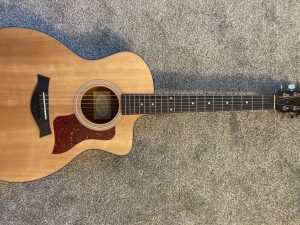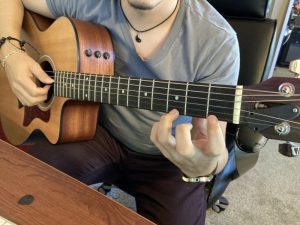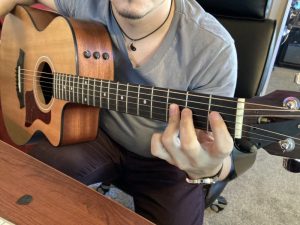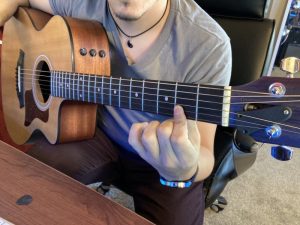The acoustic guitar has had different transformations throughout history. From 5 strings, to animal gut strings (yes, you read that correctly), the guitar has evolved in many ways. A modern acoustic guitar has steel-strings with the lower strings wound to give a deeper response. Depending on the strings and their tuning, we play different notes and can have various ways of hand placement (finger placement) for the guitar and your personal desired outcomes. We will break down three sections, enjoy.
Acoustic Guitar Strings
The modern day acoustic guitar has 6 strings. They are (from thinnest to thickest) e, B, G, D, A, E in standard tuning. There are two categories of acoustic guitars: steel string and nylon (also known as classical or Spanish). For the sake of argument, we are going to examine the steel string guitar since that is what most people consider “acoustic”. Try to memorize these both forward and backward.
For an acoustic guitar playing example, check out this video: https://youtu.be/pRSAELWZnGM
For nylon guitar playing example, check out this video:
Notes
The way I think about notes on a guitar is kind of like having 6 different pianos all lined up. The far left of the guitar are the lower notes and the further right you go, the higher the note sounds. The unique combination of notes then become chords and scales as you progress up the guitar neck. You’ll notice that there are notes A, B, C, D, E, F, & G. There are also notes between them known as accidentals. Accidentals come in both sharps or flats. The diagram above shows them as sharps (# sign).
Fingering Tips
While playing the guitar, it is important to be using proper technique. A lot of technique could be from your “fingering” hand (left hand if right-handed or right hand if you’re left-handed). When playing individual notes, focus on curving your fingers and playing with the tips of your fingers. Your nail should be pointing directly into the fretboard of the guitar. This allows for maximum control of each note and helps with speed and dexterity. Picture examples are located down below.
The improper way to play would be to bend the finger backward at any joint within the finger. In the long term, this way of playing has led to muscle and bone damage and in some cases, arthritis. It can really make your finger joints more fatigued than usual.
Conclusion
Acoustic guitar playing is very similar to many instruments. The connection to a piano and other stringed instruments makes the guitar easy to understand for someone coming from that background. Don’t forget that the technique of keeping your fingers rounded and playing with the tip is a very important technique. Know this may help not only with your overall playing, but with your musical health as well.
Jorge Salas






